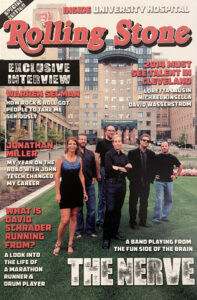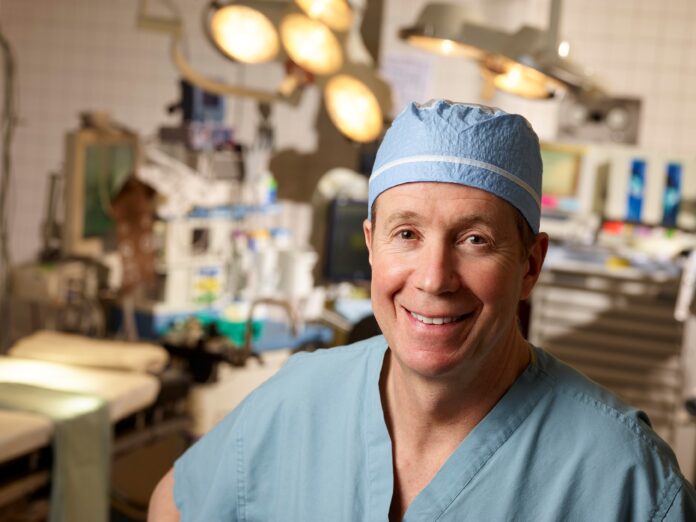AANS Neurosurgeon medical student editorial board member Uma Mahajan interviewed Warren Selman, MD, FAANS, about his journey and reflections on being a neurosurgeon for nearly half a century. Dr. Selman is the immediate past chair of the Department of Neurosurgery and past inaugural director of the Neurological Institute at University Hospitals Cleveland Medical Center (UHCMC). He is the current president of Society of Neurological Surgeons (SNS) and former director and chair of the American Board of Neurological Surgery and section chair of the American Association of Neurological Surgeons (ANS)/Congress of Neurological Surgeons (CNS) Section on Cerebrovascular Surgery. He has also served as vice president of CNS and editorial board member of the Journal of Neurosurgery (JNS).

“Sometimes the lights are shining on me
Other times I can barely see
Lately it’s occurred to me
What a long, strange trip it’s been”
“Truckin’” by Grateful Dead, 1970
Case Western Reserve University (CWRU) School of Medicine produced the greatest number of students pursuing neurosurgery from 2014 to 20201. The culture of neurosurgery at CWRU certainly plays a key role in this phenomenon. I recall how welcoming the UHCMC neurosurgery residents were to me: from giving me advice even before I started medical school, teaching me in the operating room and giving me endless encouragement over the past three years. Dr. Selman, who led this department for 16 years before stepping down as chair this January, established the UHCMC academic mentoring program. This includes a medical student research group, which has enabled increased engagement of students. The quote above from Grateful Dead beautifully symbolizes Dr. Selman’s reflections about his journey in neurosurgery, and he was gracious to sit down for an interview to share his wisdom.
The Beginnings
Dr. Selman learned the value of hard work and innovation early in his childhood. His father, Morris Selman, MD, and grandparents immigrated from Minkovitz, Ukraine, to Detroit when Morris was two years old. As the American dream goes, his family arrived with little resources, but much motivation. Dr. Morris Selman was the first in the family to enter medicine and pursued the just-emerging field of open-heart surgery.
As a young child, Dr. Warren Selman saw the realities of a physician’s life. In those days, it was a feat to keep a patient alive post open-heart surgery, and his father often slept next to his patients in the Intensive Care Unit. Nevertheless, Dr. Selman was drawn to surgery, and over the course of decades, countless patients are so grateful he did.
An Inspiring Career
Dr. Selman was drawn to neurosurgery because it was a rapidly advancing field. Early in his career, ischemic stroke patients were generally placed in a room with little hope of achieving a full recovery. Today, as we know, a clot can be removed in minutes, allowing reversal of even profound ischemic deficits. Dr. Selman’s early research interests focused on ischemic protection. More recently, he has worked with Surgical Theater™, a company founded in Cleveland by two former Israeli pilots, to advance the use of virtual and augmented reality to improve the safety of neurosurgical procedures, to educate students and to better inform patients.
In addition to advancing patient care, Dr. Selman has worked with his colleagues in the Society of Neurologic Surgeons (SNS) to advance diversity, equity and inclusion in neurosurgery.

Leadership Insights: Listening Well, Having Compassion, Elevating Others
Of his many career accomplishments, Dr. Selman is most proud to have been department chair, by carrying the tradition of his mentors Drs. Nulsen, Ratcheson and Spetzler, and by contributing to the training of neurosurgeons through his roles with the American Board of Neurological Surgery and SNS. He is also grateful to have been a member of the Aequanimitas Neurosurgical Society, whose 12 members have guided and enriched his development throughout his professional career.
Although his various volunteer leadership positions required significant time and efforts, he grew tremendously from these experiences. He gained an understanding of a larger picture outside of himself and how to collaborate towards a common goal.
“When you think about what we do daily… Patients put their trust in us, so we need to make sure we are the absolute best. In every sphere: education, clinical practice, science. You feel the weight of that, and enjoy being the rowers of the boat,” says Dr. Selman.
Personal Life: Finding Rejuvenation to Avoid Burnout
Like many surgeons, Dr. Selman has struggled to balance his career and family life. He credits much of his success to the support and patience of his children, Jack, Hadley and Jordan, and his wife, Jennifer. Despite his busy schedule, he strives to achieve a balance in his life because he affirms family is always most important.
Apart from his family, music is an important outlet for Dr. Selman to maintain a balanced life and express creativity. As a teenager, he became enamored with the Beatles and classic rock. He learned how to play guitar and started bands throughout his life. He currently plays for The Nerve, a band based in the home of Rock & Roll in Cleveland (https://www.thenervecleveland.com/music-thenerve).
Advice to the Next Generation: Being Inquisitive, Challenging the Status Quo, Being Enthusiastic
Dr. Selman believes that proper visualization is the key to preparing for each case. He advises trainees to take advantage of technology and immersive tools like mixed reality. Additionally, he stresses viewing patients as human beings with their own life stories; their values will ultimately drive treatment goals.
Despite the best preparation, every surgeon will have complications. Dr. Selman has found that emoting, rather than walling off his emotions, is the best way to cope. He emphasizes the importance of lifelong learning to continue to improve one’s practice and relying on colleagues for assistance when needed, because neurosurgery is a team effort.
“There is a fine line between recognizing that the surgeon was the last person to touch the patient prior to developing the complication, but also recognizing that the surgeon did not give the patient their disease, without which they would not have had that complication,” says Dr. Selman.
As a rising fourth year medical student, I aspire to pursue neurosurgery for essentially the same reasons Dr. Selman did years ago. The rapid advances and innovation in the field, coupled with the enormous privilege of working on the organ system that defines who we are, makes it a unique specialty. Neurosurgery is an evolving field which has contributed to improved patient outcomes and overall standard of care. I am drawn to it for this reason and hope the field will continue to attract motivated students across an increasingly diverse student cohort.
I have gleaned multiple key lessons from Dr. Selman, especially for students and trainees. Firstly, innovation is key to improving the status quo. Second, through leadership and teamwork, we become better people and surgeons. Third, rejuvenation and balance are vital to avoiding burnout. Lastly, always be a lifelong learner. I aspire to carry these lessons forward as I embark on my own journey.
1Antar A, Feghali J, Wicks EE, Sattari SA, Li S, Witham TF, Brem H, Huang J. Which medical schools produce the most neurosurgery residents? An analysis of the 2014-2020 cohort. J Neurosurg. 2021 Nov 26:1-13. doi: 10.3171/2021.7.JNS211530. Epub ahead of print. PMID: 34826816.
Thank you to Tiffany Ejikeme for providing feedback and edits during article drafting. Thank you to Lois Henegenius for providing feedback and assistance in ensuring accuracy.








